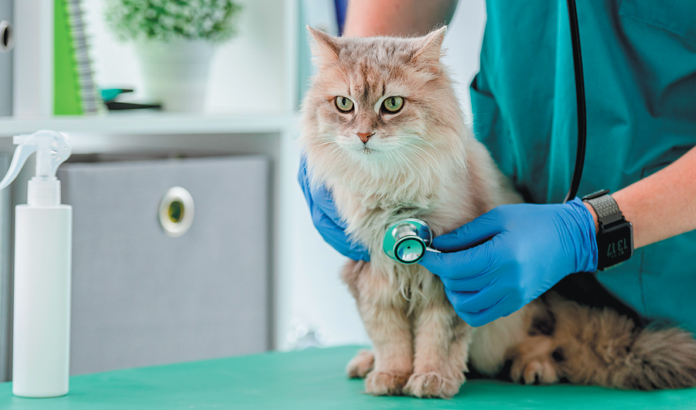Your vet tells you on each wellness visit that he detects a slight heart murmur when he listens to your cat’s heart beat with a stethoscope. There’s a whooshing sound that shouldn’t be there. He always recommends that you might want to follow up with further diagnostics but doesn’t press. And because he uses the word “slight” when describing the murmur (and the cat seems absolutely fine and further diagnostics can be costly), you figure it’s not anything to worry about and decide to let it go. Should you?
No. If your cat has a murmur of any intensity, even one that doesn’t sound very loud, she might have serious heart disease, and a recommendation for more testing is well justified.
Murmurs are caused by turbulent blood flow within the heart, which creates the sound heard through a stethoscope. But unlike with dogs (or people), the intensity of a murmur in cats does not serve as an indication of whether or not something is wrong, or how wrong it is. Many cats with low-grade murmurs have significant heart disease even if they don’t seem sick. And it can be difficult to predict when a cat with heart disease will become sick without intervention in the form of medical treatment.
Then, too, sometimes a murmur of any grade is an indication that the problem is not heart disease but anemia (a low level of red blood cells), high blood pressure, or some other condition that requires attention. Such conditions include fever, infection, and obesity or emaciation. Granted, in many cats, a murmur results from relatively benign turbulent blood flow inside the heart and will never create a problem. But you won’t know unless the heart is observed via imaging.
Thus, the next step is usually an ultrasound of the heart, called an echocardiogram. According to John Rush, DVM, head of cardiology at the Tufts Cummings School of Veterinary Medicine, “An echocardiogram is the only way to be certain whether your cat has serious heart disease or a benign condition.”
It will show blood flowing through the heart and the major blood vessels leading to and away from it. That will help determine the cause of the murmur and can indicate whether some of the blood is flowing backward rather than forward, causing fluid buildup in the lungs or chest cavity.
In other words, a murmur is a red flag. It’s a first indication that something could be amiss and needs investigation so that, if necessary, a cat can be properly treated.




